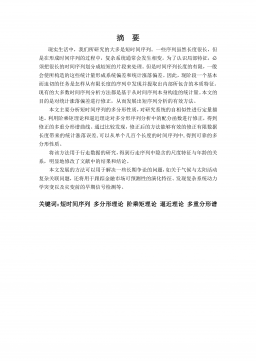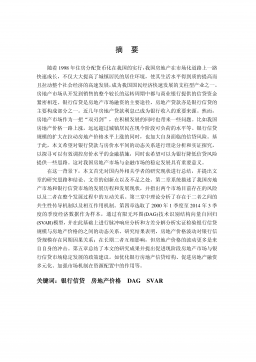大数据视角下农业供应链金融研究
VIP免费
摘 要
近年来,我国经济增速不断减慢,发展模式正由“粗放型”向“集约型”转
化,经济呈现新常态,产业结构处在不断优化中。作为国民经济的重要组成部分,
电子商务在其中发挥了很大影响。目前,中国电子商务发展迅速,业务模式不断
扩展,在传统的 B2B、B2C 和C2C 交易量屡创新高的情况下,互联网金融又异军
突起。作为电子商务行业领头羊的阿里巴巴,在互联网金融领域率先发力,不仅
创立了第三方支付平台—支付宝,还推出了阿里小贷等产品。之后,互联网金融
产品如雨后春笋,不断涌现,互联网金融正对人们生活产生深远影响。
作为互联网金融的一种业务模式,供应链金融凭借其对行业上下游资源的整
合能力,在各个领域都有广阔的发展前景,尤其对人类赖以生存的农业生产。然
而,农业供应链金融近年来刚刚提出,人们对它的运行规律、运作机理和运行方
式等还不太熟悉,对不同主导类型的农业供应链金融优劣势缺乏足够认识,对合
适的区域发展模式缺乏实践探索;此外,在农业供应链金融中,核心企业评估指
标体系的确立、核心企业的选择与评价等,缺少行之有效的方法;融资过程的风
险管控和收益分配也缺乏合理的机制。有鉴于此,本文对此问题进行了研究。在
综合分析农业供应链金融业务模式、运作机制的基础上,以上海农业,尤其是上
海生猪产业发展为例,进行分析,并得出结论。
首先,分析了国内外供应链金融现状,基于农业生产流程将农业供应链融资
的业务模式分为预付款融资、存货融资和应收账款融资。在对现状分析的基础上,
提出了农业供应链金融存在的问题,包括大数据经营问题、主导模式选择、核心
企业评估问题、风险管控和收益分配等问题。
在农业大数据经营问题中,分析了大数据在农业场景中的应用及其优势,对
大数据平台搭建过程的难点进行逐一分析。基于对流程的了解,构思出“上海市
农业供应链金融大数据信息平台”,平台分为四部分,依次是数据平台、资讯平台、
融资平台和互动平台。
关于主导模式的选择和核心企业评估的问题,本文以上海农业供应链发展为
例。首先分析了上海市现有的五种主导型农业供应链,总结其优劣势,得出核心
企业主导型的农业供应链金融最适合当前上海农业发展的需求。随后,针对上海
生猪产业进行具体分析。在生猪市场和企业指标体系建立的过程中,利用大数据
系统 Hadoop 平台中的 MapReduce 框架,运用 K-means 聚类算法,得出指标体系。
随后,运用典型相关分析,提取综合变量,以反映两组指标的整体相关程度。文
章在对比了上海梅林和新五丰两家企业与上海市生猪产业链之间的相关性后,得
出上海梅林更适合作为上海市生猪产业链中的主导企业。
作为合作博弈值的分配方法之一,Shapley 值法满足可行性、帕累托最优和各
节点企业都是理性的三个条件。运用它对供应链上的每个节点进行成本分配,每
个节点承担的成本总和恰为整个供应链的成本,且每个节点承担的成本小于等于
其单独生产时的成本。最后,基于大数据视角,从风险评估、风险度量和风险控
制三个方面出发,提出了大数据技术在农业供应链金融风险管控的模型。通过观
察最终收益,得到整合的农业供应链金融不仅能提高各参与方的收益,也使农业
供应链金融的整体收益有所提升。
本文拓展了大数据分布处理技术和数据挖掘技术的研究范围,探索了其在农
业领域中的具体应用模式,为现代农业和国际商务的发展提供了新的视角。这对
加快现代农业发展,提高农业经济效率,推动农业供应链金融发展具有重要意义。
本文的创新体现在四个方面。一是对农业大数据经营问题进行分析,提出构
建上海农业大数据信息平台的具体思路;二是运用大数据 Hadoop 平台中的 Map
Reduce 框架,结合 K-means 聚类算法,得出上海市生猪产业和供应链中核心企业
评估的指标;三是运用数据挖掘方法—典型相关分析,得出供应链中核心企业选
择的方法;四是基于大数据视角,从风险评估、风险度量和风险控制三个方面出
发,提出农业供应链金融风险管控的方法。
关键词:农业 供应链金融 大数据
Abstract
In recent years, Chinese economy grows more slowly than before. Its developing
model changes from loosen to intensive. The economy presents “The New Norm”. The
industrial structure is also under sustainable changes. To be an essential part of domestic
economy, e-commerce has great impact on it. At this moment, its model broadens the
wide. Traditional models like B2B, B2C and C2C are with good performance. Internet
Finance turns out. For example, Alibaba creates third-party payment platform and Ali
small loan. The other two giants of BAT, Tencent and Baidu also launch their internet
financing products. It can be seen that Internet Finance would have profound impact on
human life.
To be a model of Internet Finance, Supply chain finance has broad prospect. It’s
famous for the integration ability in the streamline, especially for human lying
industry-agriculture. Agricultural supply chain finance appeared not long ago, so people
are not familiar with its operating rules, operational mechanism even operating method.
Also do not have sufficient knowledge and experiences in core business-oriented,
third-party logistics oriented, farmer-led cooperative organizations oriented and
supermarket-oriented. In addition, it lacks effective method to evaluate and assess.
There’s also no fair and reasonable income distribution mechanism. For this purpose,
this paper takes Shanghai agriculture, especially pork industry as an example to analyze
all these problems.
Firstly, this paper assesses the condition of supply chain fiancé both abroad and
domestic, summarizes three business models, such as advanced payment finance,
inventory finance and accounts receivable finance. Based on above analysis, this paper
puts out problems in agricultural supply chain finance such as big data operating, core
enterprise issue, risk control and income distribution issues.
As to the big data management in agriculture, the whole process can be divided
into five parts, data collection, data storage, data analysis, data mining, and data
explanation. Then I propose the idea to build Shanghai agricultural big data platform
and how to build.
With regard to the core business assessing and selection, the first thing is to
analyze five existing models and to summarize their vantages and disadvantages thus
can reach the most suitable model. Then I used MapReduce framework in Hadoop
Platform with K-means clustering algorithm and combining economic knowledge to
establish index system. Subsequently, using data mining methods - canonical correlation
analysis extracts representative composite variables to reflect overall correlation. By
contrasting the relevance between two companies, I draw out Shanghai Meilin is
suitable.
Finally, based on the idea of agricultural information platform, I start from three
aspects- risk assessment, risk measurement and risk control, proposed agricultural
supply chain financial risk management and control methods. As to benefit analysis of
each node in the agricultural supply chain, I use cooperative game Shapley value that
satisfies the feasibility of Pareto optimality and each node is rational. It can be seen
Shapley value method can ensure fair and equitable distribution of interests of all parties
in the supply chain. Furthermore, by observing the final income, get integrated
agricultural supply chain finance not only increases the income of the parties involved,
but also improved the financial benefits of the entire agricultural supply chain.
In summary, big data can do a lot in agricultural sector. This paper is just tip of the
iceberg, only provides new perspective to agricultural development. What’s more, we
can see that canonical correlation analysis is feasible, which is helpful to promote
agricultural modernization.
Innovation of this paper is reflected in five aspects. First, analyzed big data
managing problem and put out the idea to build Shanghai agricultural big data platform;
Secondly, using MapReduce framework in distributed systems platform Hadoop with
arithmetic average clustering to derive the index system of Shanghai hog industry and
core enterprise assessment in supply chain. Thirdly, this paper combines data mining
methods - canonical correlation analysis to select core enterprise in supply chain.
Subsequently, using the thinking of big data, I propose agricultural supply chain
financial risk management approach from the three aspects, risk assessment, risk
measurement and risk control. Finally, used cooperative game Shapley value to analyze
benefit distribution in agricultural supply chain finance, the results confirmed the
Shapley value can guarantee equitable income distribution of each node in supply chain.
Key Words: Agriculture, Supply Chain Finance, Big Data
目录
中文摘要
Abstract
第一章 绪论 .................................................................................................................... 1
1.1 研究背景 ................................................................................................................ 1
1.2 研究目的和意义 .................................................................................................... 1
1.3 研究思路及研究方法 ............................................................................................ 2
1.4 创新点 .................................................................................................................... 4
1.5 国内外文献综述 .................................................................................................... 4
1.5.1 农业供应链金融研究现状 ............................................................................. 4
1.5.2 大数据研究现状 ............................................................................................. 6
1.6 本章小结 ................................................................................................................. 6
第二章 相关概念与理论 ................................................................................................ 8
2.1 相关概念 ................................................................................................................ 8
2.1.1 大数据概述 ..................................................................................................... 8
2.1.2 大数据金融 ..................................................................................................... 8
2.1.3 农业供应链金融 ............................................................................................. 9
2.2 相关理论 .............................................................................................................. 10
2.2.1 产业集群理论 ............................................................................................... 10
2.2.2 供应链管理理论 ........................................................................................... 10
2.2.3 协同理论 ....................................................................................................... 10
2.2.4 自偿性贸易融资理论 .....................................................................................11
2.3 本章小结 .............................................................................................................. 11
第三章 农业供应链金融发展现状及存在问题 .......................................................... 12
1.1 农业供应链金融的发展过程及现状 .................................................................. 12
3.1.1 供应链金融的实践 ....................................................................................... 12
3.1.2 农业供应链金融的发展 ............................................................................... 18
3.2 农业供应链金融的运作机制 .............................................................................. 18
3.2.1 目标市场与客户 ............................................................................................ 18
3.2.2 业务模式 ....................................................................................................... 19
3.3 农业供应链金融存在的问题 .............................................................................. 22
3.3.1 大数据经营问题 ........................................................................................... 22
3.3.2 供应链模式及主导企业选择问题 ............................................................... 23
3.3.3 风险管控和收益分配问题 ........................................................................... 23
3.3.4 其他问题 ....................................................................................................... 24
3.4 本章小结 .............................................................................................................. 24
第四章 农业供应链的大数据经营及风险管控 .......................................................... 25
4.1 农业大数据应用机遇分析 .................................................................................. 25
4.1.1 大数据在农业领域的应用 ........................................................................... 25
4.1.2 大数据在农业供应链金融实时场景中的优势 ........................................... 26
4.2 农业大数据经营平台构建流程及难点 .............................................................. 26
4.2.1 数据采集 ....................................................................................................... 26
4.2.2 数据存储及预处理 ....................................................................................... 27
4.2.3 数据挖掘分析 ............................................................................................... 27
4.2.4 数据解释 ....................................................................................................... 28
4.3 大数据视角下农业供应链金融风险管控 .......................................................... 29
4.3.1 大数据在国内外风险管控中的实践 ........................................................... 29
4.3.2 大数据在农业供应链金融风险管控中的应用 ........................................... 30
4.3.3 大数据视角下农业供应链风险管控模型 ................................................... 31
4.4 上海市农业供应链金融大数据信息平台构思 .................................................. 32
4.4.1 Hadoop 集群在农业大数据平台适用性分析............................................... 32
4.3.2 上海市农业供应链金融平台搭建 ............................................................... 33
4.4 本章小结 .............................................................................................................. 34
第五章 农业供应链金融收益分配及主导企业选择 .................................................. 35
5.1 上海市农业供应链金融发展模式选择 .............................................................. 35
5.1.1 超市主导型农业供应链金融模式 ............................................................... 35
5.1.2 核心企业主导型农业供应链金融模式 ....................................................... 36
5.1.3 第三方物流企业主导型农业供应链金融模式 ........................................... 37
5.1.4 批发市场主导型农业供应链金融模式 ....................................................... 39
5.1.5 农民合作组织主导型农业供应链金融模式 ............................................... 40
5.1.6 上海市农业供应链金融的发展模式选择 .................................................... 41
5.2 核心企业主导的农业供应链金融收益分配机制研究 ...................................... 42
5.2.1 Shapley 值法模型定义 .................................................................................. 43
5.2.2 Shapley 值法在核心企业主导的农业供应链金融模式中的应用 .............. 43
5.3 案例-上海市生猪产业链核心企业选择与评估 ................................................. 45
5.3.1 上海市生猪产业链发展概况 ....................................................................... 45
5.3.2 大数据视角下生猪产业链中核心企业选择 ............................................... 46
5.4 本章小结 .............................................................................................................. 56
第六章 结论 .................................................................................................................. 58
参考文献 ........................................................................................................................ 60
在读期间公开发表的论文和承担科研项目及取得成果 ............................................ 63
致谢 ................................................................................................................................ 64
附录 ................................................................................................................................ 65
第一章 绪论
1
第一章 绪论
随着大数据、云计算的兴起及互联网技术的不断发展,互联网金融逐渐进入
人们的视野。
1.1 研究背景
当前,各行各业数据的积累和 IT 技术的发展使得大数据成为社会浪潮,大数
据已在旅游、交通、金融、农业、传媒等领域取得广泛应用,影响着人类生活的
方方面面。大数据金融是通过信息化方式对客户数据信息进行挖掘分析,对融资
方式进行创新和改进,将金融置于大数据平台之上,使金融的外延和维度都有所
增加。
作为大数据金融的模式,供应链金融近年来备受关注。供应链金融基于海量
交易数据,利用核心企业的产业优势,联合金融机构,通过撮合机制对链条中资
金困难的企业进行融资的方式。这种方式实现了对接,有效降低成本,促进商品
流转,实现信息共享,有利于提高整个供应链效率。位于中间的核心企业应具备
物流、信息流、资金流闭合的能力,以提供交易明细、信息的实时交互。实现三
流闭合,利于生产、加工和销售数据的搜集,便于提升商业智能、改善客户关系、
提高供应链融资效率[1]。
农业供应链金融是供应链金融在农业方面的实践,通过核心强企业引导,对
中小企业及农户资金困难的情况进行融资。这种模式将中小企业、农户和核心企
业有效联系起来,解决了中小企业和农户的资金困难,保证了农产品的供应和分销,
降低了企业的生产成本和销售成本[2]。发达国家农业经济发展较早,积累了丰富的
农产品流通经验,如完善农业基础设施建设、加大农业科学技术的研发和推广、
充分发挥市场自我调节作用和政府的宏观调控、注重一体化、标准化的农业管理
体系等,都可以为我国建设农业供应链金融所借鉴,以提升农业生产力,加快农
业现代化建设。
1.2 研究目的和意义
由于农业供应链金融在我国出现时间不长,人们对它的运行规律、运作机理
和运行方式等还不太熟悉,尤其对模式的选择、收益共享机制的研究、风险管控
的研究和核心企业的评估指标、选择和评价还缺少行之有效的方法。
众所周知,适合的才是最好的,着同样适用于农业研究中,故适合的农业供
应链金融模式有助于推动农业产业化发展。因此,需要综合地域环境、科技发展
水平、产业化程度、流通效率和市场动态等选择合适的模式。这样才能更好的发
上海理工大学硕士学位论文
2
挥供应链的资源整合能力、创新和知识共享能力、对市场的适应能力,和模式自
身带来的独特价值创造能力。
从融资需求角度看,核心企业在交易过程中占有优势,存在一定道德风险,
如,将流动资金压力转嫁给相对弱势的群体。而农业活动中弱势群体多为中小企
业或是农户,资产实力和信用水平相对较低,融资能力弱、成本高。因此,供应
链融资作为银行承担风险较高的业务,农业供应链融资的风险管控至为重要。
利益是农业供应链金融上所有参与节点的共同追求,收益作为利益最直观的
表现,其共享分配机制直接关系到各节点的合作意向和整个供应链的稳定、可持
续发展。合理科学的收益分配机制不仅可以激励各参与方加强合作、进行自我约
束,降低信用风险,确保农产品的质量安全,也使整个供应链的收益和各参与节
点的收益有所增加,产生更多的附加价值。各参与方在重复的合作博弈过程中,
最终形成合理稳定的收益分配机制。
农业生产受到政策、环境、季节气候、疾病以及市场供求、行业波动、替代
品需求等诸多因素影响,每一环节都会产生海量数据。对这些数据的充分挖掘,
有利于提升商业决策水平,降低生产经营成本,推动整个农业供应链金融的发展。
本文在综合分析五种不同农业供应链金融模式的运行机理、形成条件和特点
的基础上,提出核心企业主导型的农业供应链金融模式最适合上海市当前农业发
展需求,为其农业发展提供了参考,有助于推动农业产业化发展。同时,为农业
供应链金融发展提供了思路,强调供应链的选择不能盲目跟风,需要结合本地特
点,选择适合的模式才能更好的发展本地农业。
收益共享机制的研究,为农业供应链金融中的利益分配提供了新的思路和方
法,有利于其健康持续发展。随后,以上海市生猪产业链为例,利用大数据分布
式系统 Hadoop 框架中的核心设计 MapReduce 的分组和聚合运算,确立了上海生
猪市场和企业市场后续分析的指标体系。最后,运用数据挖掘方法—典型相关分
析,为农业供应链金融中核心企业的选择和评估提供了新的视角和切实可行的方
法,有利于农业供应链金融的快速发展和推广。
1.3 研究思路及研究方法
随着大数据技术的不断发展,大数据金融已慢慢进入大众视野。作为大数据
金融的一种模式,供应链金融的创新方兴未艾。当前,很多银行已将供应链金融
纳入自身市场定位和竞争策略体系中。供应链金融的出现也引发了人们对中小企
业融资、产业竞争等问题的新思考。
本文在对供应链金融基本概念、运行模式和机制进行阐述的基础上,分析出
相关推荐
-
【拔高测试】沪教版数学五年级下册期末总复习(含答案)VIP免费
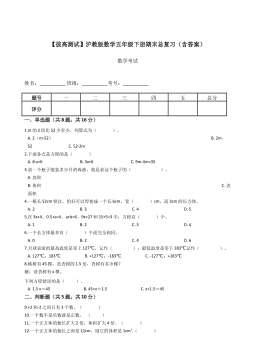
 2024-11-19 19
2024-11-19 19 -
【基础卷】小学数学五年级下册期末小升初试卷四(沪教版,含答案)VIP免费
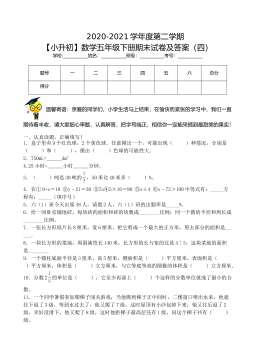
 2024-11-19 9
2024-11-19 9 -
期中测试B卷(试题)-2021-2022学年数学五年级上册沪教版(含答案)VIP免费
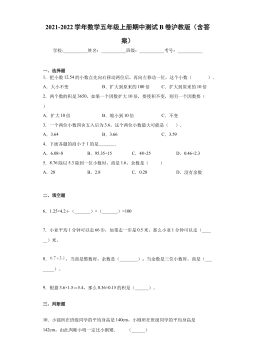
 2024-11-19 11
2024-11-19 11 -
期中测试B卷(试题)- 2021-2022学年数学五年级上册 沪教版(含答案)VIP免费
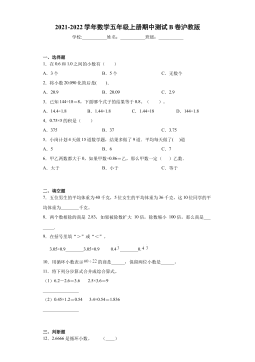
 2024-11-19 16
2024-11-19 16 -
期中测试A卷(试题)-2021-2022学年数学五年级上册沪教版(含答案)VIP免费
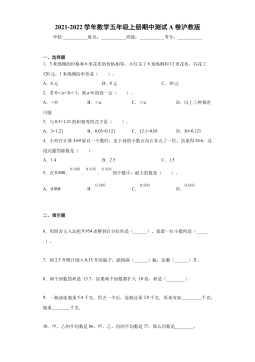
 2024-11-19 18
2024-11-19 18 -
期中测试A卷(试题)-2021-2022学年数学五年级上册 沪教版(含答案)VIP免费
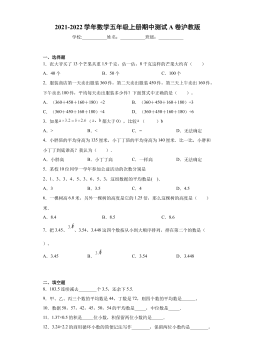
 2024-11-19 25
2024-11-19 25 -
期中测B试卷(试题)-2021-2022学年数学五年级上册 沪教版(含答案)VIP免费
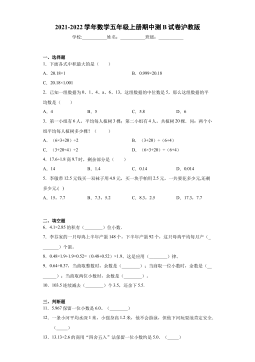
 2024-11-19 23
2024-11-19 23 -
期中测A试卷(试题)-2021-2022学年数学五年级上册沪教版(含答案)VIP免费

 2024-11-19 31
2024-11-19 31 -
【七大类型简便计算狂刷题】四下数学+答案
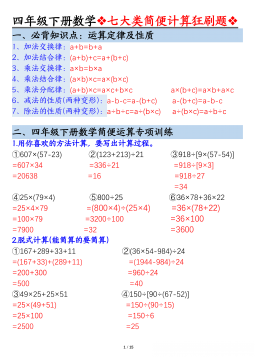
 2025-03-18 16
2025-03-18 16 -
【课内金句仿写每日一练】四下语文
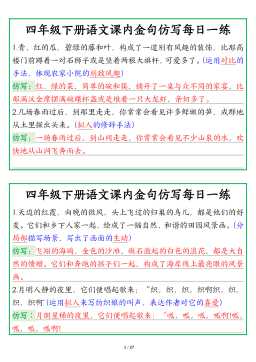
 2025-03-18 39
2025-03-18 39
作者:侯斌
分类:高等教育资料
价格:15积分
属性:77 页
大小:3.63MB
格式:PDF
时间:2025-01-09
相关内容
-

期中测试A卷(试题)-2021-2022学年数学五年级上册 沪教版(含答案)
分类:中小学教育资料
时间:2024-11-19
标签:无
格式:DOCX
价格:5 积分
-

期中测B试卷(试题)-2021-2022学年数学五年级上册 沪教版(含答案)
分类:中小学教育资料
时间:2024-11-19
标签:无
格式:DOCX
价格:5 积分
-

期中测A试卷(试题)-2021-2022学年数学五年级上册沪教版(含答案)
分类:中小学教育资料
时间:2024-11-19
标签:无
格式:DOCX
价格:5 积分
-

【七大类型简便计算狂刷题】四下数学+答案
分类:中小学教育资料
时间:2025-03-18
标签:数学计算;校内数学
格式:PDF
价格:1 积分
-

【课内金句仿写每日一练】四下语文
分类:中小学教育资料
时间:2025-03-18
标签:无
格式:PDF
价格:1 积分


